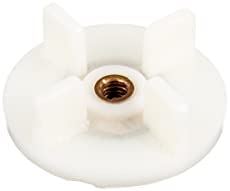

functionality.
II. Core Components of Mixer Grinder
A. Motor: Powerhouse of the Appliance
Unveiling the motor as the central component, responsible for driving the grinding and blending functions of the mixer.
B. Blades: Precision in Action
Examining the various types of blades used in mixer grinders and their role in achieving precise grinding results.
C. Jar Assemblies: Vessels for Culinary Creativity
Exploring the different jars and their specific functions in facilitating various food processing tasks.
III. Motor: The Powerhouse
A. Motor Types and Capacities
Differentiating between motor types, such as universal and induction motors, and how their capacities impact performance.
B. Power Ratings: Decoding the Numbers
Understanding the significance of power ratings in relation to the motor’s ability to handle different ingredients and tasks.
IV. Blades: Precision Instruments
A. Grinding Blades
Detailing the design and functionality of grinding blades, emphasizing their role in achieving uniform texture.
B. Mixing and Blending Blades
Exploring the blades responsible for mixing and blending tasks, highlighting their versatility in culinary applications.
C. Specialty Blades for Unique Functions
Showcasing specialty blades designed for specific functions, such as chopping, grating, and pureeing.
V. Jar Assemblies: Versatility in Processing
A. Grinding Jar
Discussing the design and features of the grinding jar, tailored for tasks like dry grinding and making spice blends.
B. Blending Jar
Examining the blending jar and its suitability for creating smoothies, shakes, and liquid-based recipes.
C. Chutney Jar
Highlighting the compact chutney jar, ideal for processing small quantities of ingredients for condiments and sauces.
VI. Switches and Controls: Operation Simplified
A. Control Panel Features
Exploring the functionalities of control panels, including speed settings, pulse mode, and safety locks.
B. Innovative Controls for Enhanced User Experience
Showcasing innovative control features that contribute to user-friendly operation and customization.
VII. Safety Features: Ensuring User Protection
A. Overload Protection
Detailing how overload protection mechanisms safeguard the motor and other components from excessive strain.
B. Safety Locks and Lid Interlocks
Exploring the role of safety locks and lid interlocks in preventing accidental operation and ensuring user safety.
VIII. Material Choices: Durability and Aesthetics
A. Jar Materials
Evaluating the materials used in manufacturing jars, considering factors like durability, transparency, and ease of cleaning.
B. Housing and Body Materials
Examining the materials used in the housing and body of the mixer grinder, balancing aesthetics with durability.
IX. Maintenance and Cleaning Guidelines
A. Cleaning the Blades and Jars
Providing practical tips on cleaning and maintaining mixer grinder to ensure hygiene and longevity.
B. Lubrication for Motor Health
Discussing the importance of motor lubrication and providing guidelines for proper maintenance.
X. Replacement Parts and Repairs
A. Availability of Replacement Parts
Exploring the availability of replacement parts in the market and the ease of repairing common issues.
B. DIY Repairs vs. Professional Services
Weighing the pros and cons of do-it-yourself repairs versus seeking professional assistance for mixer grinder maintenance.
XI. Upgrading and Customizing Mixer Grinder Parts
A. Upgrading Motor Capacities
Discussing the possibility of upgrading motor capacities for enhanced performance in heavy-duty tasks.
B. Customizable Blades and Attachments
Exploring the market for customizable blades and attachments, allowing users to tailor their mixer grinder for specific needs.
XII. Real User Experiences: Testimonials and Reviews
A. User Satisfaction with Different Mixer Grinder Parts
Showcasing testimonials from users who have experienced the efficiency and durability of specific grinder parts.
B. Addressing Common Concerns
Addressing common concerns raised by users and providing insights into resolving them.
XIII. Environmental Impact and Sustainability
A. Materials and Manufacturing Practices
Evaluating the environmental impact of mixer grinder , considering materials and manufacturing processes.
B. Recycling and Disposal Guidelines
Providing information on the recyclability of mixer grinder and responsible disposal practices.
XIV. Future Innovations in Mixer Grinder Parts Technology
A. Anticipated Technological Advancements
Speculating on future developments in mixer grinder technology, from smart features to energy-efficient components.
B. Integration with Smart Home Systems
Envisioning how grinder parts might integrate with smart home systems for enhanced connectivity and control.
XV. Conclusion
A. Recapitulation of Key Insights
Summarizing the crucial elements of mixer grinder and their impact on the overall performance of the appliance.
B. Final Thoughts on the Versatility and Innovation in Mixer Grinder Parts
Concluding with reflections on how the intricate design and functionality of mixer grinder parts contribute to culinary convenience.
















